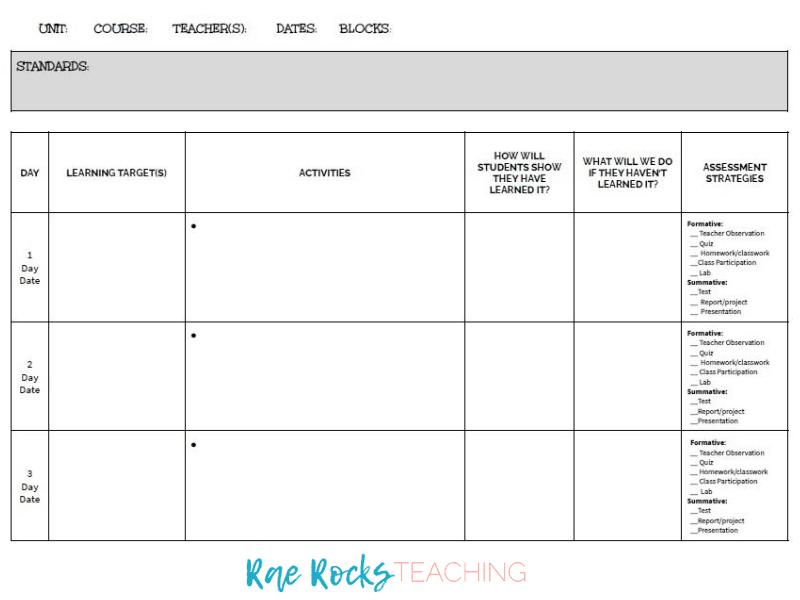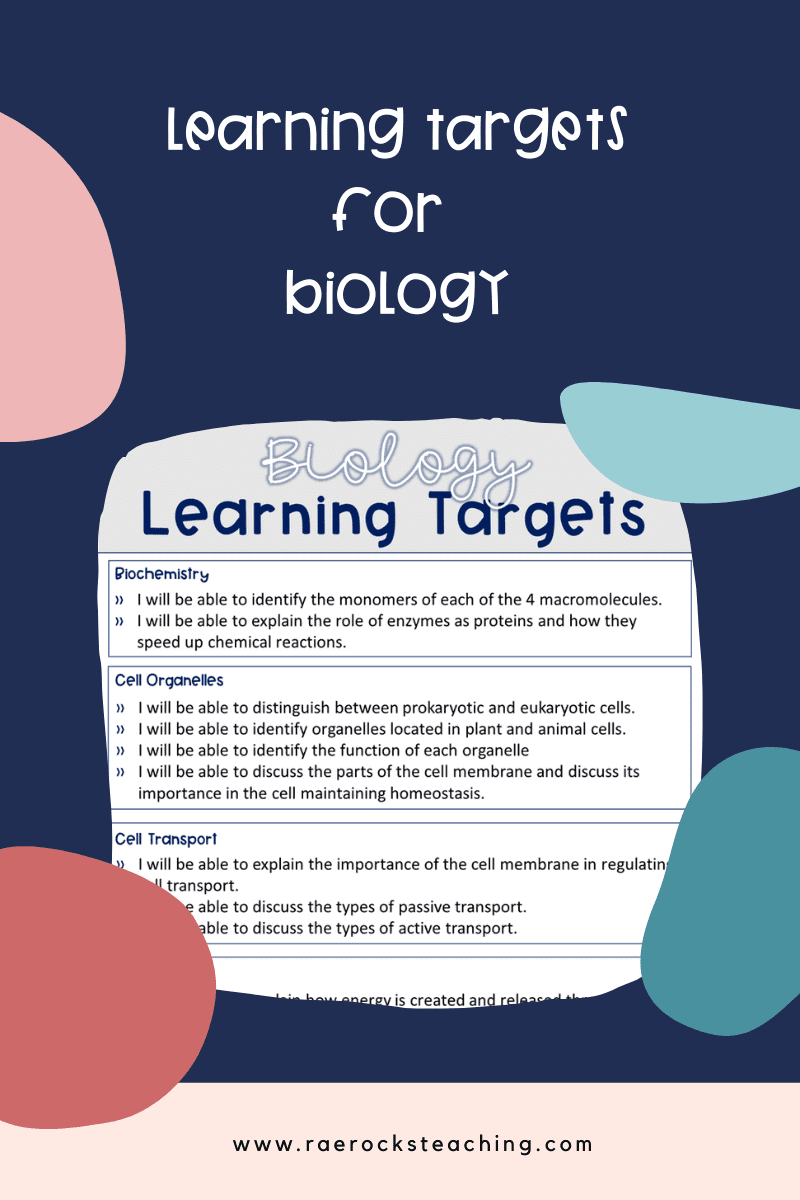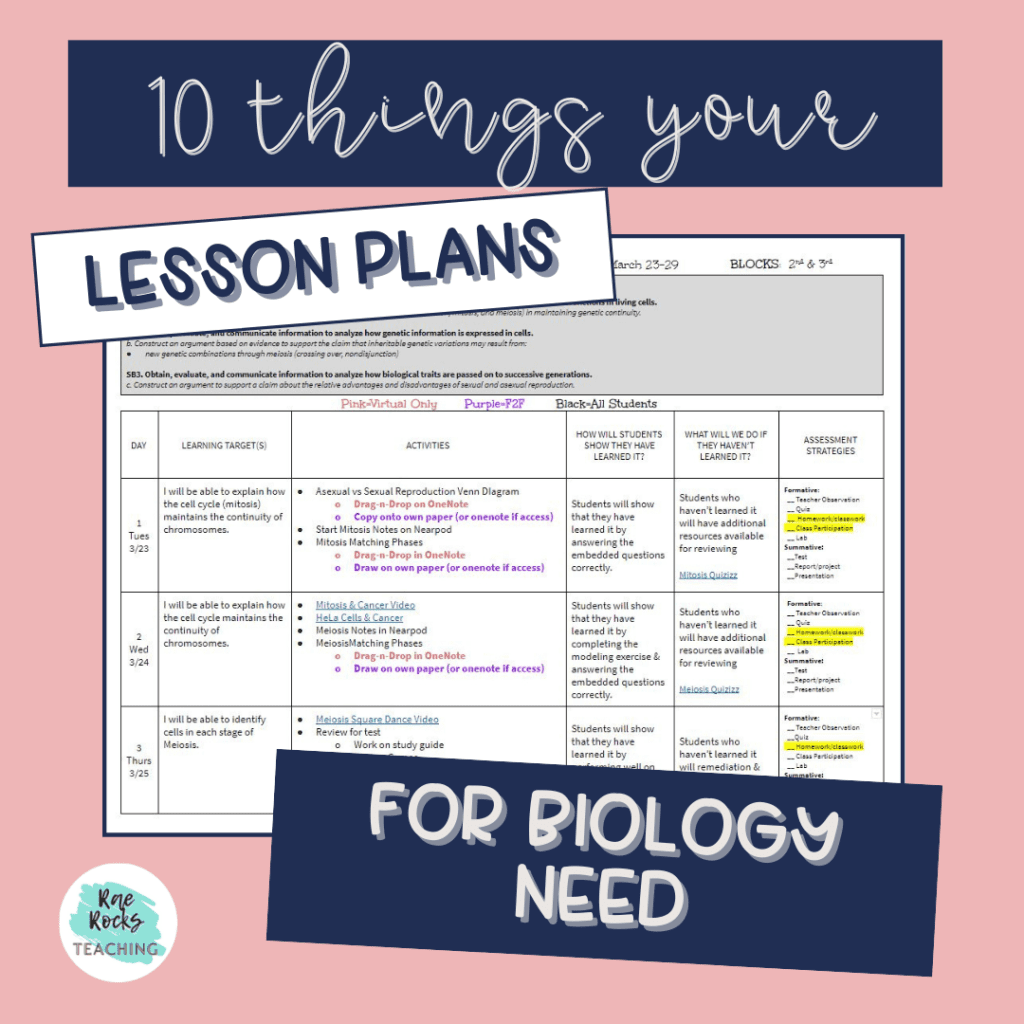So, I remember when I first started creating lesson plans for biology as a new teacher and I was lost! Cue the tears. I didn’t have the slightest clue what I needed to include for high school biology lesson plans. But then I got some great ideas from teachers that I worked with, did my own research, and came up with the perfect lesson plan template. Here are 10 things you should have in your lesson plans for biology.
10 Things Your Lesson Plans for Biology Need

-
Save
# 1: Title of Unit
By having a unit title it allows anyone (including administrators) to know what unit this lesson will be covering.
# 2: Dates of Unit
When creating lessons, we need to have a start and end date in mind, even if you have to tweak it along the way.
# 3 Teacher/Course/Blocks Taught
This will be a great add-on if you have a co-teacher and/or have multiple classes this course is taught. It helps to give a clear picture of who is in charge in the classrooms.
# 4: Standards
Lesson plans need to include the standards that are going to be taught to the students. The GA standards of excellence are one of the highest benchmarks for Biology and are what our state uses to guide what students should be learning. Want a copy of these too? Get them with the freebie.
# 5: Day/Date of the week
When planning what you are doing for the unit, breaking it down into the number of days and the date/day of the week helps to keep you on track of what needs to be covered and when you are going to cover it.
# 6: Learning Targets
These are so in right now and admin typically expects to see them in lesson plans now. Learning targets
are what they students will be able to do as a result of that lesson. You can choose to have unit learning targets, but having a new learning target each day helps you and the student know what they are expected to learn from that lesson.

-
Save
# 7: Activities
This is where you will fill in what you will be doing during the class period. You can put as much or little detail as you want here. I find it helpful to use bullet points for each new activity and also include transitions. Specifically, if there is a video clip I will put the length of the video in parentheses so i know how long it will be. I also hyperlink activities, videos, etc. here so I don’t have to search all of my folders looking for the resources I need while teaching.
# 8: How do you know they have learned it
This is where you will add how you are going to see if they learned the information you taught that day. You can be creative here. Oftentimes, I use exit tickets, surveys, quizizz games, etc…the list goes on.
# 9: What do we do if they haven’t learned it
Here is where you add in your remediation piece. How do you make sure the students who didn’t get it the first time eventually get it? You could assign USA Test Prep activities, you could have a mini-tutoring session. You also could have students watch a video clip and answer a few questions (ex. EdPuzzle or Nearpod). This doesn’t need to take a ton of your time or the student’s time.
# 10: Assessment Strategies
Lastly, you are going to add in various ways you will assess your students. Believe it or not, you already do this daily and don’t even think twice about it. You are simply documenting your formative or summative assessment. Examples of formative assessments include teacher observation, a quiz, student participation, classwork, or even a lab. Summative assessment examples include a test, presentation, report, or project.
And there you have it! The 10 things you should have in your high school biology lesson plans.

-
Save
Share via:









6 Responses